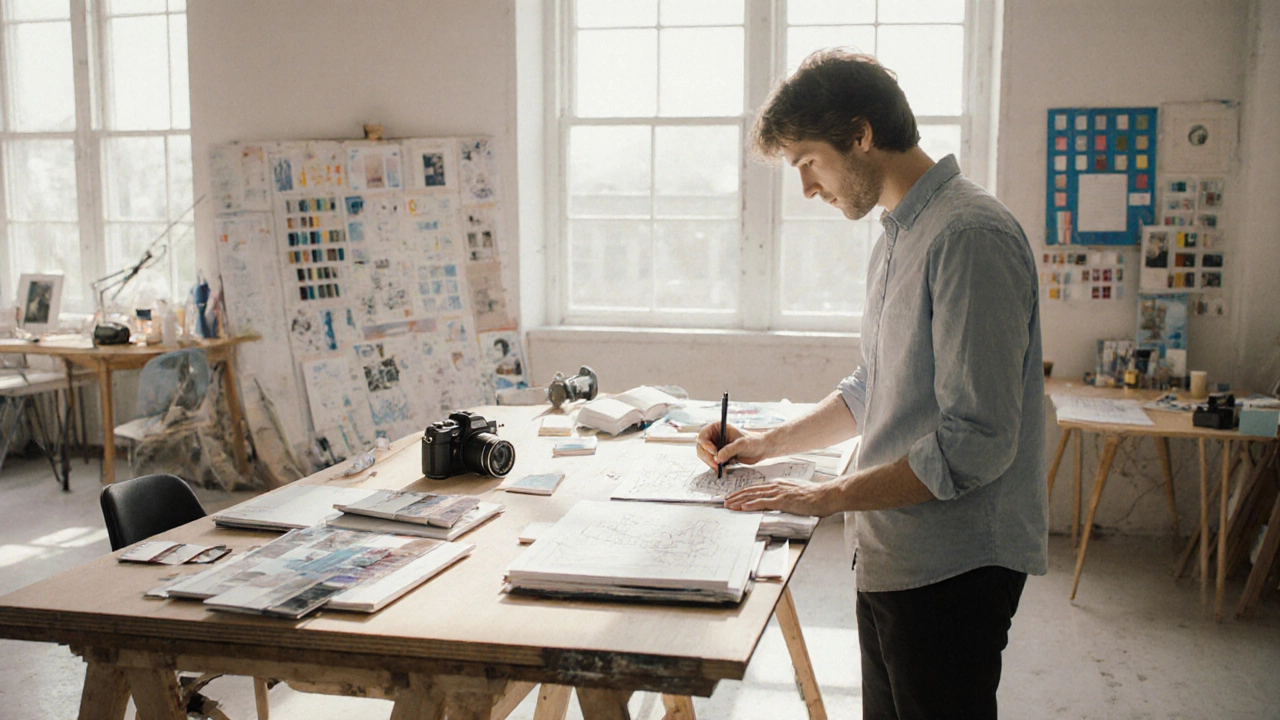Fine Arts Photographer Duties Explained
When talking about Fine Arts Photographer Duties, the specific tasks a photographer performs to create, present, and protect fine art images. Also known as art photography responsibilities, these duties blend technical skill, artistic judgment, and business savvy. Understanding them helps you decide if this career matches your talents and what daily habits will make you succeed.
One of the first related concepts is Fine Arts Photography, a genre that treats photographs as works of visual art rather than mere documentation. It requires a photographer to master lighting, composition, and post‑processing while keeping an eye on the conceptual story behind each shot. This means the duty of creative development isn’t optional—it’s the backbone of the whole practice.
Another key entity is Photographer Responsibilities, the set of professional obligations that ensure quality, consistency, and client satisfaction. These responsibilities include equipment maintenance, schedule management, and clear communication with collectors or galleries. When you keep your gear in top shape, you reduce downtime and protect your reputation.
Now, let’s connect the dots. Fine arts photographer duties encompass three core areas: creation, presentation, and protection. Creation covers scouting locations, setting up lighting, and directing subjects. Presentation involves preparing prints, writing captions, and coordinating with venues. Protection means handling copyrights, negotiating licenses, and archiving files safely. In other words, the duties require both artistic vision and business acumen.
Speaking of presentation, Art Exhibition Planning, the process of organizing shows, from concept to installation directly influences photographer duties. When you know the exhibition theme, you can tailor image sizes, framing, and lighting to fit the space. This relationship shows that exhibition planning guides the photographer’s technical choices.
Image licensing is another related entity worth highlighting. Image Licensing, the legal framework that lets others use a photographer’s work for a fee shapes how you protect your images. Understanding licensing agreements helps you set appropriate fees, avoid misuse, and keep a steady income stream. This duty connects creative output with financial sustainability.
Let’s break down a typical day. You might start by checking equipment—cleaning sensors, charging batteries, and updating firmware. Then you move to client communication: confirming shoot details, sharing mood boards, and setting expectations. After the shoot, you edit the raw files, applying color grading that matches the intended aesthetic. Finally, you prepare print proofs, write artist statements, and upload metadata for licensing platforms. Each step maps to a specific duty in the creation‑presentation‑protection framework.
Collaboration also plays a big role. Working with curators, art directors, and fellow artists means you must translate ideas into visual language. This duty requires strong listening skills and the ability to adapt technical setups on the fly. When a curator asks for a specific size or material, your knowledge of printing processes and archival standards becomes essential.
Technical skill isn’t just about taking a sharp photo. It includes mastering RAW workflow, color space management (sRGB vs. Adobe RGB), and file backup strategies. A reliable backup plan protects your work from hardware failures and aligns with the protection duty. Many photographers use the 3‑2‑1 rule: three copies, two different media, one off‑site. This habit saves hours of stress later.
Business duties often get overlooked, but they’re just as critical. Setting rates, invoicing promptly, and tracking expenses keep your studio financially healthy. When you understand how licensing fees stack up against print sales, you can price your services more competitively. This financial awareness feeds back into the creation process, letting you invest in better gear or more ambitious projects.
Finally, consider long‑term career growth. Building a portfolio that showcases a consistent visual voice helps you attract higher‑profile commissions. Networking at gallery openings, joining photography collectives, and publishing in art magazines expand your reach. These activities are extensions of the duty to promote your work and keep the creative pipeline flowing.
All these pieces—technical, artistic, logistical, and legal—form the complete picture of fine arts photographer duties. Below you’ll find a curated selection of articles that dive deeper into each area, from salary trends and exhibition differences to practical tips for fixing oil painting mistakes and mastering watercolor sketches. Use them as a toolbox to sharpen your skills, streamline your workflow, and elevate your practice.
